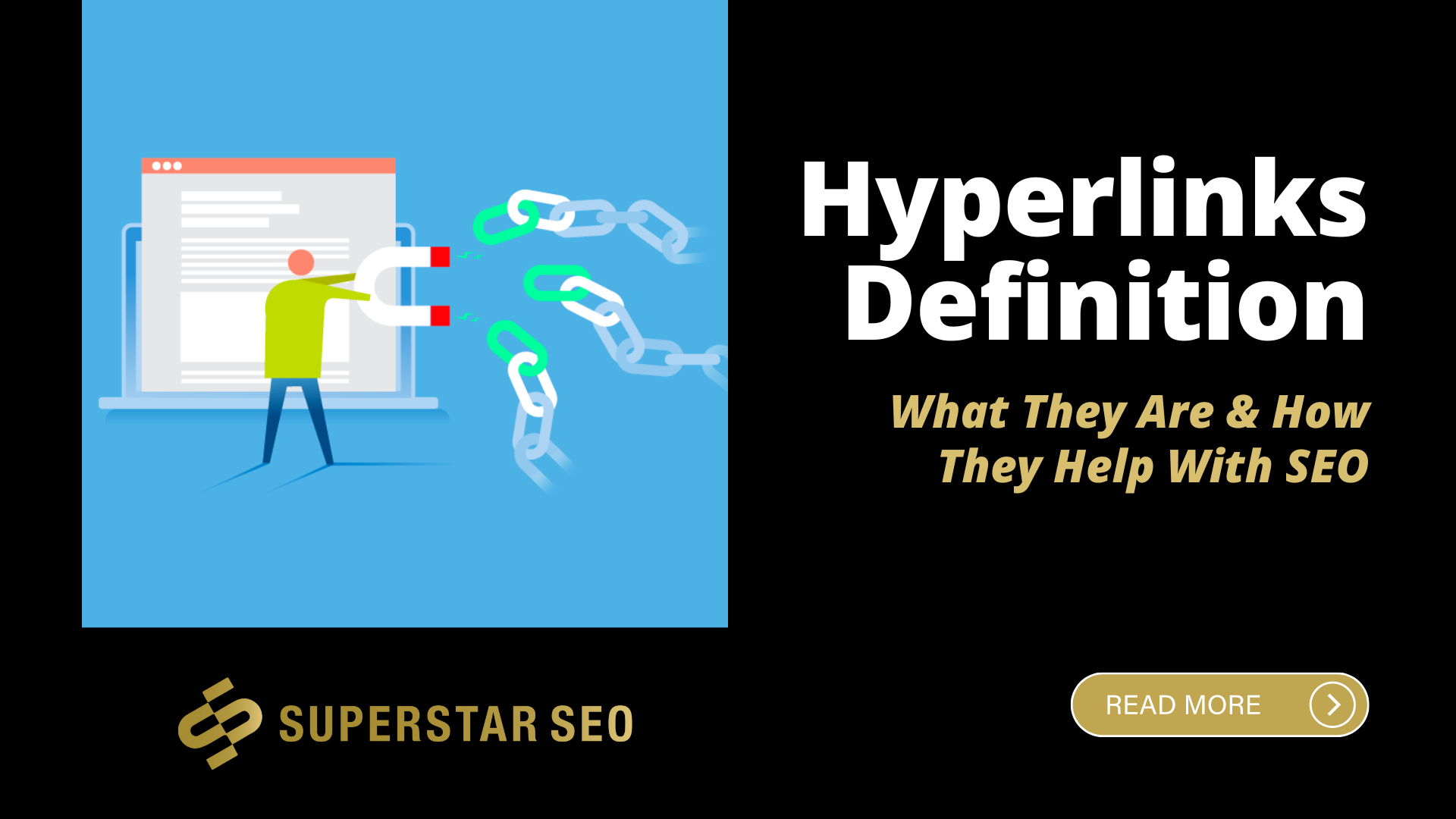Hyperlinks Definition: What They Are & How They Help With SEO
In the world of search engine optimization, hyperlinks are an absolute must-have—after all, they serve as a sort of virtual highway that makes it easy for search engines to find your site and move around on it. But what exactly are hyperlinks? In this article, we'll discuss the hyperlinks definition and how they can help boost your SEO if you use them correctly.
What Are Hyperlinks? Hyperlinks Definition
Here's a quick hyperlinks definition and how they can help improve your SEO.
Hyperlinks are basically the highway that connects one online location to another.
But they can also be used to link to other resources, like documents, videos, or images.
You click on hyperlinks to “jump” to a different web page or other parts of the same web page.
When it comes to SEO, hyperlinks are important because they help search engines understand the structure of your website and can be used to help boost your ranking.
In HTML code, hyperlinks are added to an element that describes the link (the anchor text.)
Make no mistake; hyperlinks work differently from links.
Links are the direct address of a website, and they specify your resource's location on a server.
Meanwhile, when you click on a hyperlink, you are simply following a link.
Understanding HTML Tags for Better SEO
1. Title Tag
The title tag is one of the most important HTML tags for increasing your rankings.
It tells search engines what your page is about, and it's also one of the first things people see when they're looking for something online.
While inputting a title tag is easy, you can't choose just any text.
The SEO keywords that you target with your content need to be in your title tag.
They tell search engines how they should rank you.
If you're using WordPress, you don't need to worry about adding the HTML tags manually.
Simply type in your title, and WordPress will do the rest.
Keep in mind that each website page should have a unique title tag.
2. Meta Description Tag
After the title tag, the meta tag is a must for anyone serious about their SEO.
A meta description tag is a short snippet of text that appears under the title of your page on search engines. This tag is used to provide more information about your page to potential customers and visitors.
Meta descriptions are important for SEO because they are used to determine how well your content ranks for specific keywords in search engines.
A good meta description will contain the main keyword associated with the page and its importance in relation to the rest of the content on a page.

If you do this right, your meta description will help you rank well on Google and sell the “click” with compelling copy.
Tip:
Make sure to have some kind of continuity between your title tag and your meta description so that search engines can understand what you're going to talk about.
Keep in mind that you should use one keyword that appears in the title tag and meta description.
For this purpose, you can use different keyword research tools that make life easier for you.
3. Header Tags
Header tags are a crucial part of technical SEO.
They help search engines understand the structure of your content and can give your pages a boost in the SERPs.
Including them in your content is easy, but there are a few things you need to keep in mind.
There are several different header tags, depending on your format.
You can use headings and subheadings to organize your content.
When you tag all your topical headings throughout your blog, you tell search engines exactly what your content is about.
This is how Google creates rich snippets you'll sometimes see when looking for a topic.

Including header tags in any of your content is really simple.
Using an HTML editor, include the tags <h1> for the front and </h1> for the end.
4. Image Alt Tags
Alt tags are a technical SEO element that tells Google what an image is about.
If you want your images to rank on Google, you need to include alt tags.
This can help boost your SEO because it allows Google to index your images properly.
That way, when someone searches the “Images” tab, they can still find your content.
Unlike in other tags mentioned above, in this case, you don't necessarily need to include the keyword you're targeting for the overall content piece this image is housed within.
Conclusion
A hyperlink is a link from one piece of online content to another.
They're important for SEO because they help search engines understand page relationships.
Plus, they can help boost your ranking in search results.
If you're not sure how to use hyperlinks or you're having trouble with your SEO, be sure to check out any technical SEO checklist or site auditing tools that can help you find and fix broken internal links.
That's how you will learn how to fix common SEO issues.





